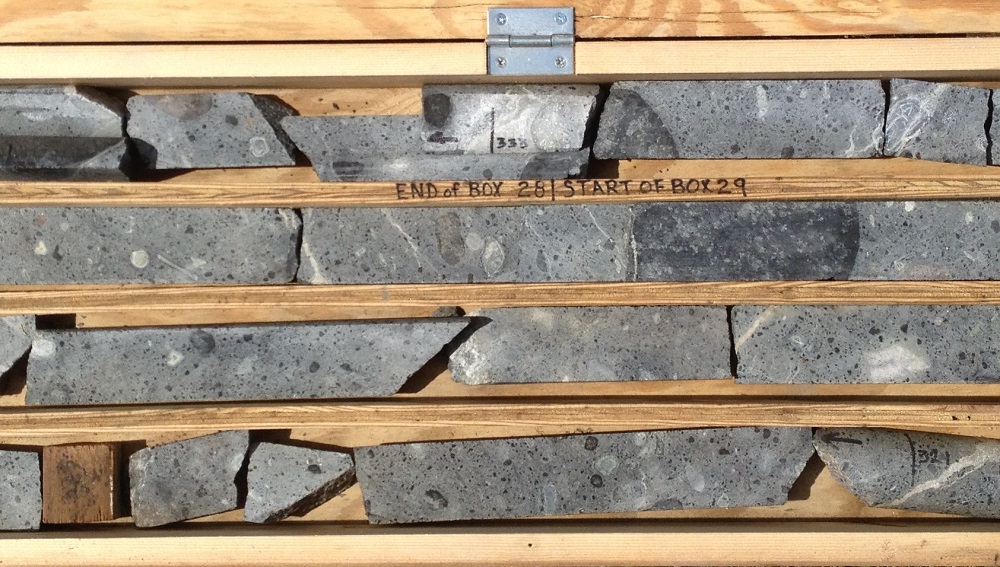Strategic and Critical Minerals
Rare Earth Elements in Igneous Intrusions
Rare Earth Elements are considered a strategic and critical commodity because of their use in satellite communications, military weapons systems, and green energy uses. Rare earth elements are lanthanum, cerium, praseodymium, neodymium, promethium, samarium, europium, gadolinium, terbium, dysprosium, holmium, erbium, thulium, ytterbium, lutetium, and usually yttrium and scandium are also included in this suite of minerals. The igneous intrusive complex of alkaline ultramafic rocks in in the western Kentucky Fluorspar District (WKFD) are slightly enriched in rare earth elements and contain rare minerals, including garnets. Whole rock elemental analysis of some of the dikes was chondrite normalized and shows some of the dikes are slightly enriched in light REE. More detailed information about the REE content and mineralogy of these rocks is available in Anderson, in press. These igneous intrusions also contained elevated values in titanium, cobalt, zinc, gallium, niobium, uranium and thorium.

Cobalt, Nickel, and Manganese
Several minerals veins in the Western Kentucky Fluorspar District, including the Givens, Tyrie, Columbia, Yandell, and Eaton veins, have possible cobalt anomalies. They were first described by Fohs (1907), and the Kentucky Geological Survey conducted more recent work in the early 1980s. Cobalt appears to be associated with manganese. Analysis for cobalt and nickel in 1983 showed their elemental contents to be too low to be a potential source of strategic minerals, but their occurrence is of interest in understanding the geochemistry of the fluorspar district. These elements were located near the Levias-Crittenden Springs Fault System.
Chemical analysis of insoluble residues of samples in the Jimmy Bell No. 1 well, Webster County, showed anomalous values for copper, lead, and cobalt. Other slightly anomalous values were for molybdenum, silver, and nickel. These anomalies occurred at a depth of 13,000 feet, which would place them in the first major carbonate sequence (Knox Group) above the Mount Simon sands in this part of the basin.
Chromium and Platinum
The potential for these minerals is possible in the fluorspar district, either associated with the alkaline intrusives or at the Elliott County kimberlite. Several dikes in western Kentucky had elevated values of chromium: Minner, Davidson and Caldwell Creek. Most of the major platinum and chromite deposits in the world are bedded, and although there is no data to suggest they are economic in Kentucky, more work needs to be done on these deposits.
Cadmium, Germanium, and Gallium
These elements occur as trace elements, primarily in sphalerite in the zinc ore bodies of the state. When sphalerite is mined containing these trace elements, a premium on the price of any ores at the smelter is obtained. The Lexington Quarry Zinc Mine has a high cadmium content. The Dyer Hill Mine in western Kentucky also has high values of these minerals. High gallium was noted in some of the igneous dikes in western Kentucky (Anderson, in press).
Silver
Trace amounts of silver, as much as 1 ounce per ton, were recovered from galena concentrates at the Dyer Hill Mine in Livingston County. The silver was produced as a byproduct while the mine was producing fluorite and galena, and it would not be economic to produce the silver on its own. The anomalous silver at this mine is of interest in regional investigations of geochemical zoning in the Western Kentucky Fluorspar District.
